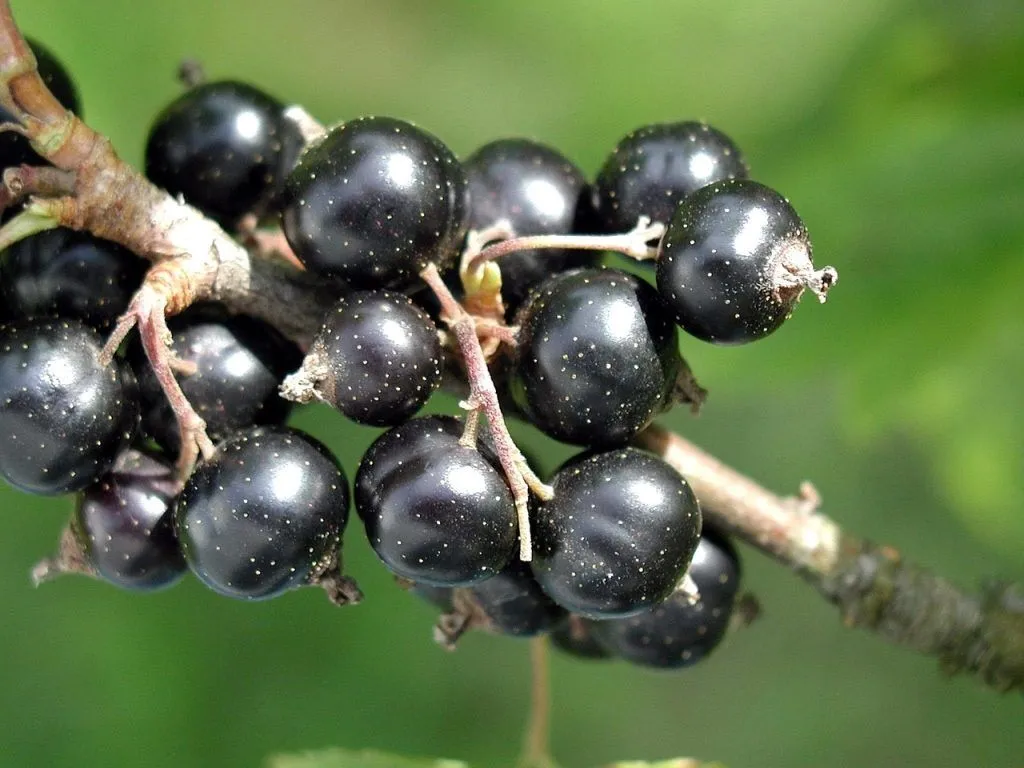Black currants, the tart berries with a distinct taste, have a long and complex history in the United States. Despite being popular in Europe yet hardly anyone has tried them in the US, the lowly black currant (also spelled blackcurrant) has struggled to gain the same level of recognition and popularity in the US. This blog will explore the ban on blackcurrants in the US, the reasons behind the ban, the reintroduction, their current status, the impact of the ban on other fruits, the legal status of blackcurrants in the US, the benefits of eating them, the characteristics, their popular uses of in other countries, and some delicious additions to cooking using blackcurrants as an ingredient.
The Historical Ban on Blackcurrants in the US
In the 19th century, blackcurrants faced a federal ban in the United States. This ban was in response to the white pine blister rust, a disease that affected pine trees in the US. Being the main element of spreading the disease and passing it into the wood of the logging industry, were banned in the early 1900s in an effort to prevent the disease from spreading in pine tree plantations. The ban had a significant connection with commercial pine tree plantations and was banned to protect the existence of the pine trees.
The Motive Behind the Ban
The ban in the US was motivated by the prevention of white pine blister rust, a disease caused by the fungus Cronartium Ribicola. This disease posed a significant threat to pine trees in the US, which is why the ban aimed to protect the timber industry and prevent the disease from spreading further. To control the disease, the federal government banned their cultivation, as they were believed to be carriers of white pine blister rust. The ban was implemented to safeguard the pine forests of the US. However, the ban was later lifted, first at the federal level and then by some states.
Why is black currant banned in the US?
Blackcurrant is not banned in the US. However, it was once banned in the early 20th century due to concerns over its role in spreading a disease that affected white pine trees. The ban has since been lifted, and is now cultivated in certain states.
The Reintroduction and Current Status of Blackcurrants
Blackcurrants were reintroduced in the 20th century coming in from Europe, but they have still not gained widespread popularity. Efforts of researchers and the logging industry led to the limited cultivation of black currants in the US. Today, they are commercially available in the US, although they remain less common than in Europe. While cultivation in the US has seen a resurgence, the fruit is still not as popular as in other countries. It is often considered a niche fruit, primarily used in liqueur production.
And so the problem is that even though it’s been legal again to grow currants in that half a century timespan, we went through a generation or two and our cultural knowledge and memory of that fruit basically disappeared.
While the federal ban has been lifted, some states still have restrictions in place. However, new cultivars that are immune to white pine blister rust may soon make it legal to grow blackcurrants in New York. Despite this, most Americans can only enjoy processed or dried berries as fresh berries are not widely available.
Why is Black Currant Still Not Popular in the US?
The majority of Americans are unfamiliar with blackcurrants, largely due to the historical ban. Their ban in the early 1900s limited the cultivation, commercialization, and marketing efforts, which in turn hindered their popularity. Lack of awareness and limited availability further contribute to the fruit’s limited popularity in the US. Additionally, they’ve not been traditionally integrated into American cuisine or culinary practices, unlike in Europe where they are commonly used in various culinary delights.
How Did the Ban on Black Currants Impact Other Fruits?
The ban on black currants in the US indirectly impacted the cultivation, consumption, and commercialization of the fruit in the country. The ban created an opportunity for the cultivation of alternative fruits, such as gooseberries, which were still capable of carrying white pine blister rust. As black currants were banned, other fruits from the same family, Ribes Nigrum, continued to be grown, potentially carrying the disease. The ban had implications beyond, affecting the fruits in the ribes species.
Is Black Currant Still Illegal in the US?
Black currants are no longer illegal in the US, but their cultivation and commercialization are regulated. The ban on black currants in the US has been lifted, allowing for their cultivation in certain states. However, regulations still exist due to concerns over white pine blister rust. While black currants are no longer banned, the cultivation of black currants in the US is subject to state-specific regulations, which vary in permissibility.
However, there are some areas where they have begun to thrive again, including Connecticut. In fact, Fairfield, Hartford and New London Counties are listed as places where blackcurrants have been introduced. Nonetheless, efforts are being made to develop cultivars that are immune to the disease so that blackcurrants can be legally grown in more areas of the country.
The Benefits of Eating Black Currant
Black currants are not only tart and tasty, but they also offer numerous health benefits. They are rich in antioxidants, vitamin C, and other beneficial nutrients. Eating them may support immune health due to their vitamin C content, as vitamin C is known to boost the immune system. The antioxidants in black currants can help protect the body against oxidative stress, reducing the risk of chronic diseases. Additionally, black currants have anti-inflammatory properties, which may benefit overall health. Their nutrient content also contributes to healthy skin, hair, and vision.
What is Black Currant?
Scientifically known as Ribes Nigrum, is a shrub that produces small, tart berries. These berries are black in color, round in shape, and have a distinct tart taste. Native to Europe and have been cultivated for centuries, primarily for their culinary uses. The berries are often used in the production of jams, drinks, jellies, and liqueurs. They belong to the ribes species, which also includes gooseberries.
Popular uses of black currant in other countries
In several countries, they are commonly used in the production of blackcurrant liqueur, known as cassis. France, in particular, is known for its blackcurrant liqueur, cassis, which is widely used in cocktails and in the production of the famous Kir drink. In the United Kingdom, being used in the production of the popular blackcurrant drink, Ribena, which is enjoyed by people of all ages. In Europe, they are used in various culinary applications, including desserts, sauces, and beverages. They are also used in the production of dry fruits, jellies, and other preserves in some European countries.
What are some recipes or dishes that include black currants as an ingredient?
Black currants can be used in both sweet and savory dishes, adding a unique tart flavor. Some popular recipes that include black currants are jam, sorbet, and cheesecake. Also being used in meat dishes like pork or lamb, adding a tart element to the overall flavor profile of the dish. Additionally, black currants can be added to cocktails or used as a flavoring for tea, creating a refreshing and tart taste.
Some Interesting Facts About Blackcurrants
- A three-foot shrub with small, dark berries, known as the blackcurrant ( Ribes Nigrum)
- The most notable product is a blackcurrant soft drink called Ribena, which has been a classic refreshment since the late 1930s
- White pine blister rust first appeared in the U.S. in the early 1900s , when growers imported infected pine seedlings from Europe.
- While some sources claim a 1911 start date, federal regulations from this era are not widely available. However, mentions of blackcurrant and blister rust became prominent in federal sources throughout the 1920s and 1930s.
- Federal Register notices from the 1930s reminded users of the prohibition of “current and gooseberry plants” in states affected by blister rust.
- In the 1960s, after revised breeding practices allowed resistance to blister rust in the United States, the government revoked all federal regulations aimed at preventing the disease.
- Europe still remains the producer of 99% of the world’s blackcurrant stock
Conclusion
The ban in the US had a significant impact on the popularity and availability of this wonderful fruit. While the ban has been lifted in some states, they’re still not widely grown or consumed in the US. However, it is important to recognize the numerous health benefits they offer. They are rich in antioxidants, vitamin C, and other beneficial compounds that support immune health, eye health, and overall well-being. In other countries, they’re commonly used in various recipes and dishes, adding a unique and delicious flavor. It is time for the US to embrace the forbidden and versatile fruit and incorporate them into some culinary traditions.


